Like most farming communities Terang is a town with strong community life. One aspect of this is church life, with churches operating from very early days. The Presbyterian Church building was officially opened in 1894, though the congregation was active long before that.
Terang is in the Western District of Victoria, and is part of the Shire of Corangamite. It is on the Princes Highway 212 kilometres south west of Melbourne. It had a small population decline between 2001 and 2006, with census figures showing 1859 and 1824 respectively.
A Scottish squatter named James Dawson recorded much of the language of the original inhabitants, the Kirrae Wuurong people. The first dwelling in the township of Terang was a slab hut built in 1840 by Donald McNicol. The town developed through the 1840s and 1850s. It was well developed enough by 1859 that the Post Office was opened on 1 March 1859.
The railway reached Terang just 8 years later in 1867, and was extended further west and south, including to Mortlake. The Mortlake line was opened in 1893 and closed in 1967.
Terang is a National Trust Town of historic trees.

As I visited Terang and have researched this page, it has become obvious to me that Terang is a town with a lot of civic pride and confidence. This was so in the early days of settlement, and is very obvious in the early twentieth century from the fine buildings established then, and is still obvious now from the condition of the town, it’s excellent facilities and it’s cleanliness. Like all country towns it has its challenges as farms consolidate into bigger units which can cause a loss of population – Terang’s population declined a little between 2001 and 2006, see above – and the tendency for people to move to bigger towns, particularly coastal towns. But Terang continues as a vital living community in a beautiful area of Victoria.

I have tried to get the feel of Terang with a few select images of highlights of the town. There is no doubt much more to see in Terang that is not included here. If you have pictures or stories of Terang that you would like to see on this page please contact us.
Thank you to Mick H, a Terang local (though he reckons his twenty years in the town are not enough to qualify him as a local!) who showed me around and pointed out areas of interest.

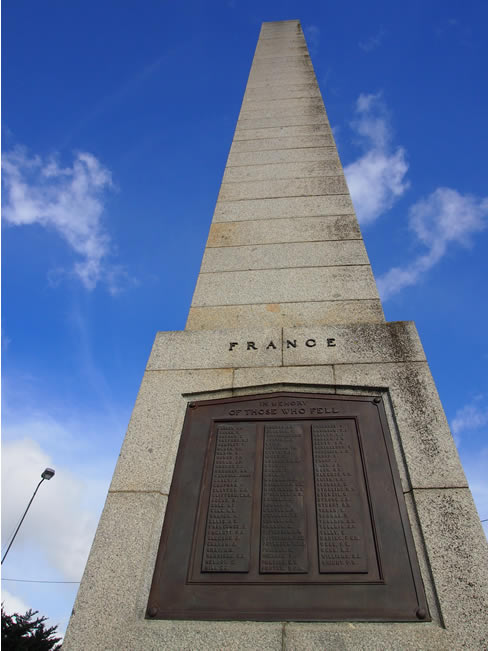
Copyright © Willem Schultink
A familiar sight to both locals and motorists, the Terang War Memorial is located in the middle of the main street, where motorists going through Terang in either direction have to pass. Originally built to remember those who served in World War 1, it was opened on 15 April 1923. Since then additional plaques have been installed for World War 2, the Korean war and the Vietnam war.
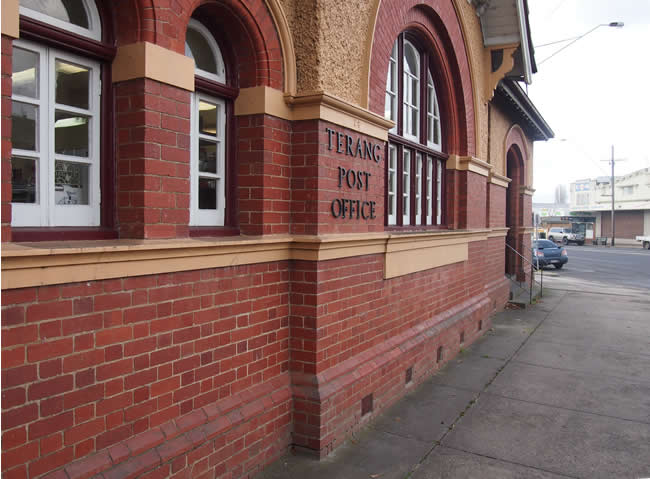
Copyright © Willem Schultink
The original Post Office was opened in 1859, but by the turn of the century it was inadequate. The new Post Office was designed by architect JH Marsden of the Victorian Public Works Department.
At that time the states continued to build public buildings until the new Commonwealth government could establish itself and take over those responsibilities. The building was completed in 1903 – 1904.
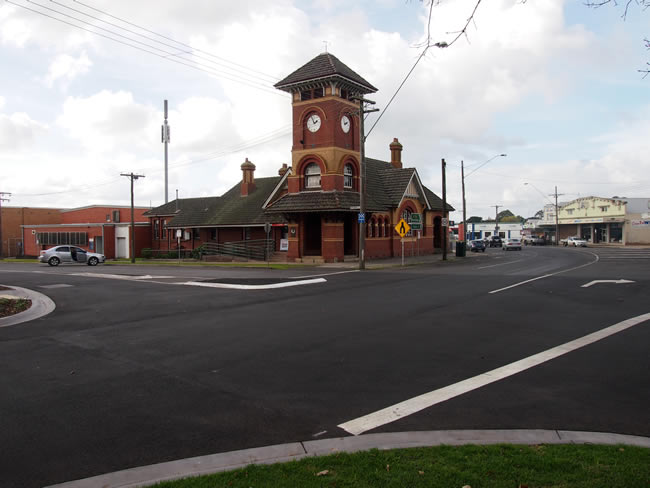
Copyright © Willem Schultink
The clock tower on the Post Office was financed by public subscription, the first time a clock tower on a Commonwealth building had been financed by public subscription.
Interestingly, another example of a Post Office with a clock tower financed by public subscription is the old Geelong Post Office This was also designed by JH Marsden of the Victorian Public Works Department. It was built in 1890, but the clock wasn’t added until 1911. It was also financed by public subscription. It is a sign that there was considerable civic pride in Victoria that two such projects were financed in this way.
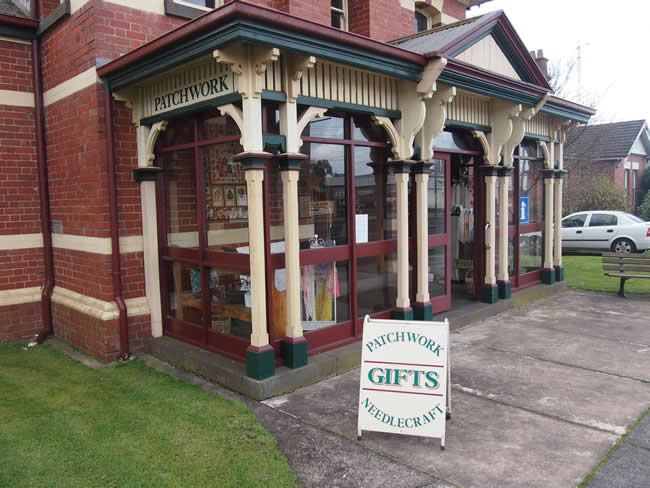
Copyright © Willem Schultink
Just a few steps down the road from the Post Office is the old Terang Courthouse. This was built of Northcote bricks at the same time that the Post Office was built (and designed by the same architect?). The Presbyterian Sunday School building and the Police Station were also built at that time by the same builder.
This building activity early in the twentieth century shows that there was considerable civic pride and confidence in Victoria at the time. The courthouse building is currently for sale … your chance for a piece of history!
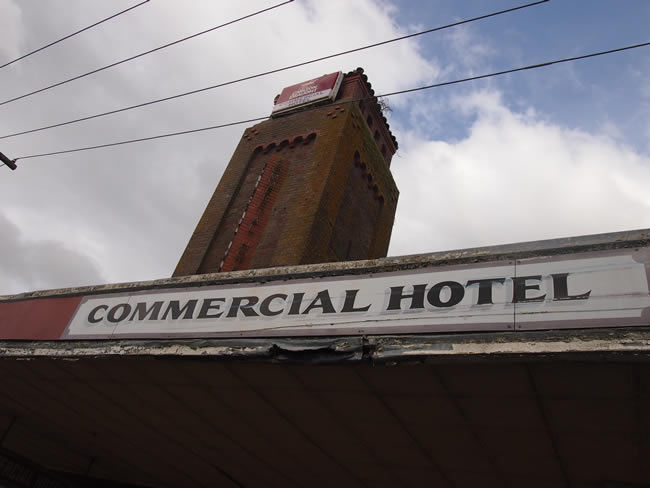
Copyright © Willem Schultink
The Commercial Hotel was originally built by Mr Asche in around 1866. The original building was demolished and replaced but the tower portion was retained.
The present building has fallen on hard times and has been condemned for residential use. Only the shops and bar can continue to operate.
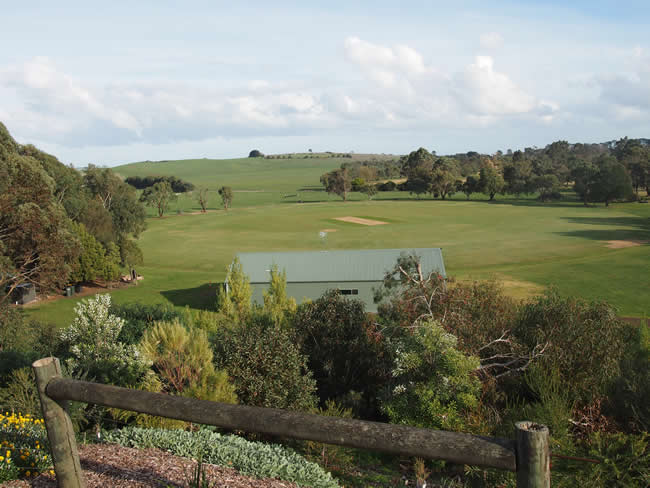
Copyright © Willem Schultink
Looking over the oval towards the cemetery (whose residents have the best view in town!) on the hill in the distance. There is a beautiful golf course to the right of the picture. In the middle ground is the area that used to be the Terang Lake.
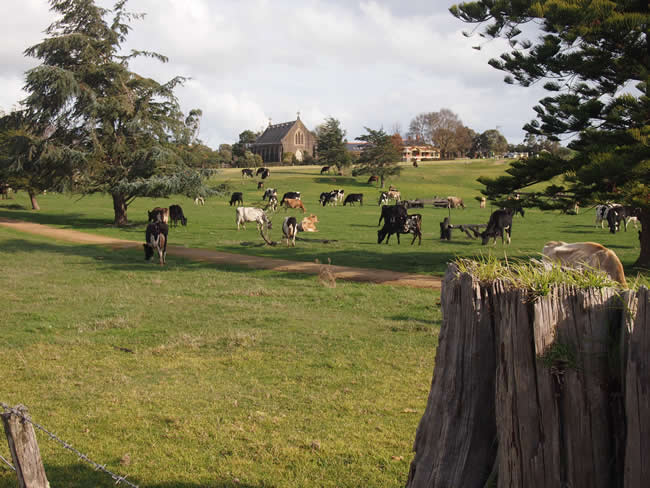
Copyright © Willem Schultink
The Terang Lake was used as a sheep wash by the early settlers. When it was full it was a substantial lake with a maximum depth of 21 feet (7 metres), with lots of birds and fish. Fishing and boating were common. But by the 1930s the lake had dried up completely and in 1933 the peat lake bed caught fire and burned for weeks.
The lake is now drained with parts being used by the pony club, the cricket oval, the golf club, the croquet club and the bowling greens. Part is also leased to a farmer for grazing, as can be seen from the picture. On the far side you can see the old Catholic church that was built in 1900 and the presbytery which was built in 1910. These are now private residences.
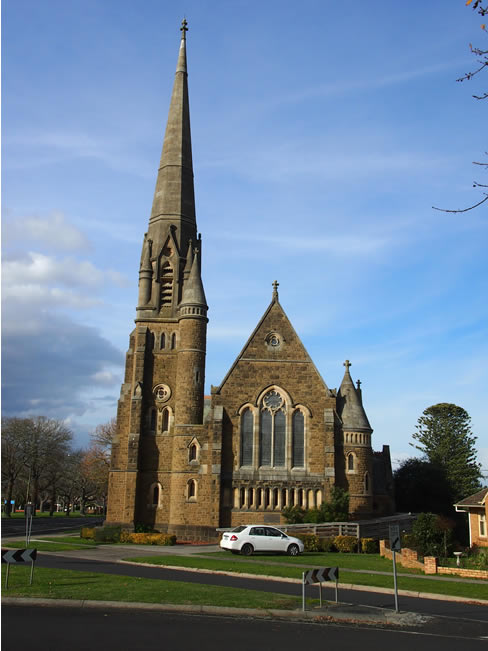
Copyright © Willem Schultink
Built of Barrabool sandstone in 1894 by the widow of John Thomson in his memory. A very impressive structure for a town the size of Terang. It was modelled on Scots Church in Melbourne.

Copyright © Willem Schultink
The entrance to the church building. (The church itself, of course, is the congregation that meets to worship God in this building). The spikes on the mouldings and over the door are there to deter pigeons from sitting there and fouling the pathways … and, presumably, the parishioners!
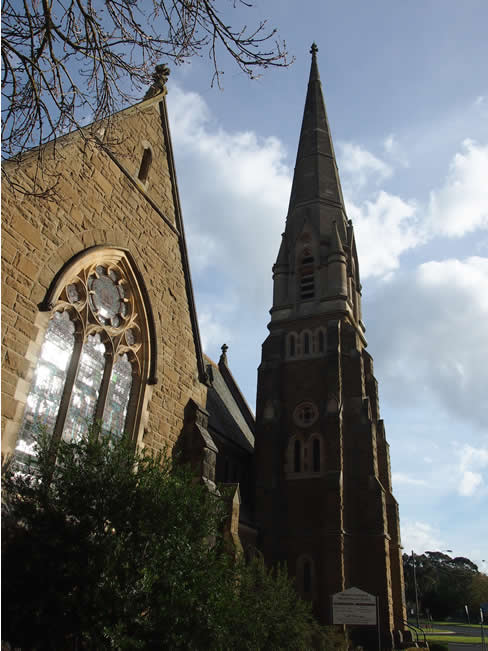
Copyright © Willem Schultink
Northern face of the building. The purpose of a steeple is to point us to God. Notice that at the very top of the steeple is a cross, probably the most well recognised symbol in the world. It represents the excruciatingly tortuous death and subsequent resurrection of Jesus Christ to pay for all the sins and evil of humanity.
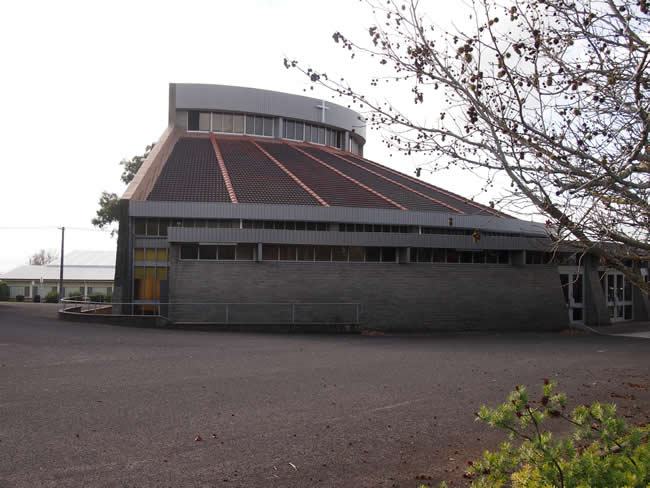
Copyright © Willem Schultink
A much more contemporary building, it replaces the one built in 1900 near the Terang Lake – see picture above. Note again the prominent position of the cross, which is the defining symbol of the Christian church.
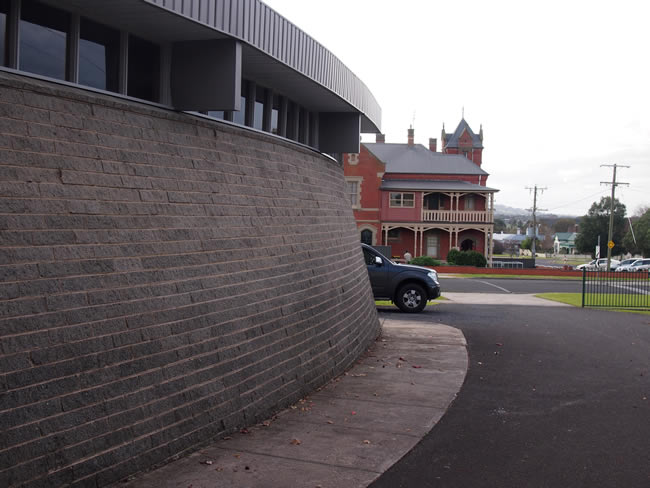
Copyright © Willem Schultink
Detail of the church building, with the St Thomas secondary school building in the background. The primary school building is to the left of the secondary school building, behind the church building.
This page Copyright © ThisisAustralia.au


All the labels you use every day, with excellent service! EveryLabels.com.au

